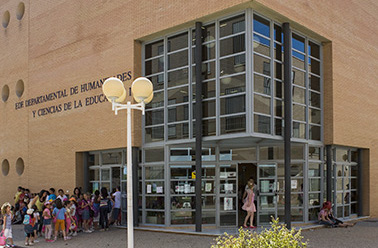Presentación
{{pre.error[0].message}}
Importante:
- Documento de ayuda a tu matrícula.
ATENCIÓN:
En el curso académico 2024-25, este Máster será sustituido por una nueva versión denominada Máster en Ingeniería Informática.
(La nueva versión incorpora una mención dual)
La adaptación entre versiones no supondrá perjuicio o el menoscabo en los derechos y garantías del actual estudiantado.
Puedes acceder a la nueva versión del Máster en el siguiente enlace: Máster en Ingeniería Informática.
 La propuesta de Máster en Tecnologías y Aplicaciones en Ingeniería Informática tiene como objetivos:
La propuesta de Máster en Tecnologías y Aplicaciones en Ingeniería Informática tiene como objetivos:
- Completar la formación académica en el ámbito de la Ingeniería Informática como continuación a los estudios de Grado en Ingeniería Informática, ofreciendo una formación práctica que atienda a la demanda existente en el sector de las TIC.
- Constituir el periodo formativo del programa de Doctorado en Informática de la UAL para aquellos graduados que deseen desarrollar su Tesis Doctoral.
Dicha propuesta sustituye y adapta los másteres actuales que se ofertan en la Escuela Superior de Ingeniería en el ámbito de las Tecnologías de la Información, como son el Máster en Ingeniería Informática y el Máster en Informática Avanzada e Industrial.
El interés de una oferta formativa de post-grado vinculada a la profesión de Ingeniero en Informática es múltiple: por un lado, configura una oferta de continuación de estudios a los titulados de Grado vinculados a la profesión de Ingeniero Técnico en Informática. Por otro lado, se justifica por atender a un ámbito de ejercicio profesional, pero también de conocimiento científico y académico, consolidado y ampliamente extendido, tanto en España como en otros países de referencia.

Perfil recomendado para estudiante de nuevo ingreso
El perfil del alumno al que va dirigido este máster es el de un titulado universitario que posea las competencias vinculadas con la profesión de Graduado en Ingeniería Informática y desee adquirir y desarrollar las competencias de Ingeniero Informático.
El máster está orientado a los egresados de la titulación de informática que se imparte en la Escuela Superior de Ingeniería, graduado en Ingeniería Informática, y a las titulaciones antiguas (diplomados, licenciados, ingenieros técnicos e ingenieros superiores), aunque no está cerrado a otras titulaciones.
El perfil de acceso del solicitante será el de un alumno con los conocimientos científicos básicos necesarios para comprender, interpretar, analizar y explicar los conocimientos propios de su campo de estudio.
De este modo, el título está dirigido preferentemente a ingenieros técnicos/graduados en ingeniería informática, que deseen especializarse en Tecnologías Informáticas.
Personas que deseen ejercer la profesión de ingeniero informático, por cuenta propia o ajena.
Se recomienda a los alumnos poder leer en inglés textos científicos y profesionales con soltura, y comprender material audiovisual en inglés.
Datos generales
Rama de conocimiento:
{{pre.presentacion[0].nom_rama}}
Duración del programa:
{{pre.presentacion[0].n_creditos}} Créditos / {{pre.presentacion[0].n_duracion}} años
Tipo de enseñanza:
{{pre.otros_datos[0].tip_ensenanza}}
Lengua(s) utilizadas:
Campo de estudio:
{{pre.presentacion[0].nomambito}}
ISCED:
{{pre.presentacion[0].c_campos_estudio}}
{{pre.presentacion[0].c_campo_estudio_2}}
Coordinación
Teléfono: {{coo.coordinador[0].tlfcoo | trim}}
E-mail: {{coo.coordinador[0].emailcoo}}
E-mail: {{c.cen_email}}










 El Máster en Ingeniería Informática facilita al estudiante la posibilidad de una formación superior especializada que le habilitará para continuar estudios de doctorado y/o incorporarse al mercado de trabajo en mejores condiciones.
El Máster en Ingeniería Informática facilita al estudiante la posibilidad de una formación superior especializada que le habilitará para continuar estudios de doctorado y/o incorporarse al mercado de trabajo en mejores condiciones.